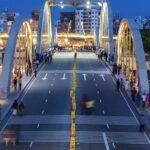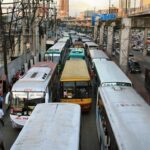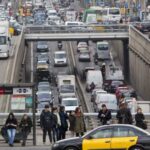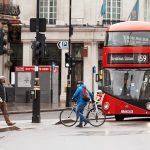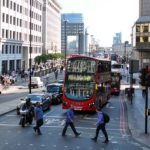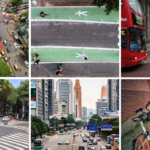Posts tagged with 'London'
In the stylish Grünerløkka neighborhood in Oslo, construction workers are busy rehabilitating Sophies Minde, an old medical clinic, into a new nursery school and maternal health center. Tidy piles of building materials along the perimeter of the construction site wait ...

With growing urban populations and increases in cars, trucks and buses, cities are poised to experience more harmful pollution threatening people’s health and livelihoods. But some cities around the world are turning to an emerging solution called zero-emission zones (ZEZs). These are designated ...

You start the day frustrated, your alarm clock ringing 30 minutes earlier than usual to try to beat the thousands of other morning commuters out the door. Battling bottlenecks has become your daily drill, from the side road shortcuts to ...

With cities facing population growth, changing work patterns, the climate crisis and ever-widening inequality gaps, improved transportation systems are critical. City governments and local leaders are uniquely positioned to foster innovation to serve public needs. Teaming up with private sector ...

Like many cities, Nairobi greets visitors with the sight of densely packed buildings, the scent of roasting food and the sound of honking horns, mostly from motorcycles weaving through traffic. While these popular motorcycles provide an affordable and fast form ...

At COP27 in Sharm El Sheikh, world leaders will focus on the seemingly overwhelming task of fast-tracking the reduction of greenhouse gas emissions while lessoning our dependence on fossil fuels. Two days later, Urban Transitions 2022 gets underway in Sitges, ...

Half a century ago, a lethal haze of smoke and fog, otherwise known as the Great Smog of 1952, covered London and killed as many as 12,000 people. More recently, in 2013, Ella Adoo-Kissi-Debrah died at the hands of air pollution. ...

Road development throughout the 20th century was based primarily on the premise that more infrastructure eases traffic. But evidence shows that road building, instead of reducing congestion, actually increases traffic. When travel time by car is reduced and convenience increased, ...

EDITOR’S NOTE: Sustainable Food Production for a Resilient Rosario won the 2020-2021 Prize for Cities on June 29, 2021. Learn more here. (June 29, 2021) City life can be deeply unfair. This was true before the COVID-19 pandemic exposed just how ...

This is part one of our series on urban freight and achieving a “triple zero” bottom-line: zero emissions, zero road deaths and zero exclusion from core services and opportunities. A line of trucks files patiently into the Port of Shenzhen. ...

Innovation in cities has alleviated poverty, reduced wasteful resource consumption and achieved incredible economic outcomes. It’s part of the secret sauce that has led to the primacy of cities in today’s world, with urban areas accounting for 67% of global ...

In 2003, London followed the example of Singapore and launched a congestion charge, requiring drivers to pay £11.50 ($15.90) to enter the city center and becoming a global example of how this innovative but sometimes fraught policy can work. Sixteen ...

Thirty-six people died in traffic crashes in Washington, D.C., last year, a 20% increase from 2017. Eight people, six of whom were walking or biking, have already been killed this year, prompting a major public rally just two weeks ago. ...

Beijing is one of most congested cities in the world, with over 6 million cars on its roads. In 2017, drivers spent on average just under three hours in traffic each weekday. Data from the navigation app AutoNavi shows Beijing ...

In 2018, we watched cities around the world grapple with the new mobility transition. Shared, electric and autonomous transportation, at the touch of the button, is redefining how people get around. At the same time, the ultimate effect of these ...









